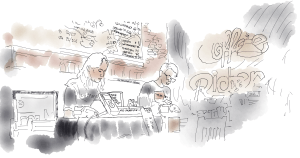As a business owner, you know that it takes more than just a great product or service to acquire more business. You need to capture the attention of potential customers, motivate them to take action, and create an emotional connection with them. This is where emotional marketing comes in.
Emotional marketing is a powerful tool that leverages the power of emotion to drive more sales and conversions. This type of marketing uses emotion to create an emotional connection with customers, foster trust, increase engagement, and ultimately boost conversions and sales. In this blog post, we’ll discuss the benefits of using emotion-based marketing and provide strategies for optimizing your emotional marketing.
Tapping your emotions
Emotion is an instinctive state of mind derived from one’s circumstances, mood, or relationships with others. It plays an important role in marketing, as it has a powerful influence on consumer purchasing decisions. Through the use of emotional triggers in marketing campaigns, businesses can effectively create an emotional connection with customers and compel them to take action.
There are numerous benefits to using emotion in marketing and sales. For starters, it can lead to increased engagement from customers. It can also help build a stronger connection between your brand and customers, as well as increase customer loyalty. Ultimately, it can lead to increased conversions and sales.
Emotional Marketing Strategies
There are several strategies businesses can use to leverage emotion in their marketing. The first step is to establish trust and credibility with your target audience. This can be done by ensuring that your messaging is consistent with your values and brand identity, as well as by practicing transparency and communicating often with customers.
Storytelling is another effective strategy for leveraging emotion in marketing. Creating compelling stories that engage customers can help draw them in and evoke emotion. Anecdotes and narrative arcs can be used to effectively convey a message and create an emotional connection with customers.
Offering incentives is another way to drive sales through emotion-based marketing. Incentives such as discounts, offers, and promotions can create a sense of urgency and motivate potential customers to act. By connecting incentives to customers’ emotions, you can effectively drive more sales.
Crafting persuasive copy is also key when it comes to emotion-based marketing. Using persuasive language that evokes emotion can help compel customers to take action. Choosing the right words can make all the difference when it comes to creating an emotional connection with customers.
Optimizing Your Emotional Marketing
In order to maximize the effectiveness of your emotion-based marketing efforts, it’s important to optimize your strategies. Using the right visuals is one way to do this. Incorporating visuals into your marketing materials can help elicit emotion from customers and make your message more engaging.
Personalizing your message is also critical when it comes to optimizing your emotional marketing efforts. Customizing messages based on customer interests, needs, and preferences will make them more personal and engaging for customers.
Leveraging customer reviews is another way to optimize your emotional marketing campaigns. Utilizing positive customer reviews can help foster trust with potential customers and provide an authentic perspective on your product or service.
Finally, utilizing social proof is a great way to optimize your emotion-based marketing efforts. Highlighting customer success stories can help demonstrate the effectiveness of your product or service, as well as create a sense of belonging amongst customers.
Conclusion
In conclusion, using emotions in marketing and sales campaigns is a powerful tool for business owners who want to acquire more business. By leveraging emotion-based marketing strategies such as storytelling, offering incentives, crafting persuasive copy, utilizing visuals and personalization, leveraging customer reviews, and utilizing social proof, you can create an emotional connection with customers, foster trust, increase engagement, boost conversions, and generate more sales.












